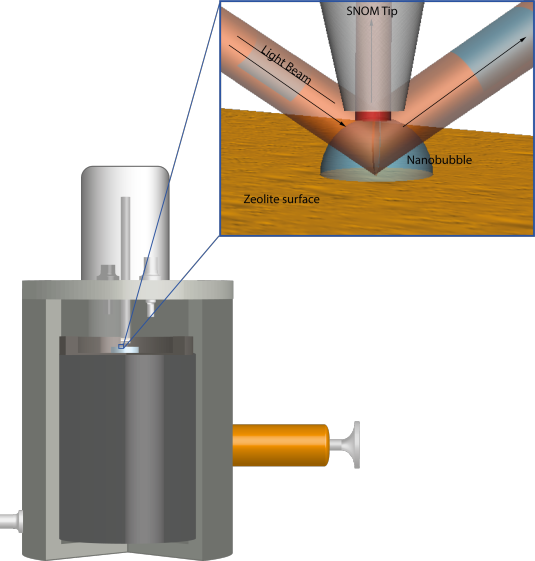Can We Observe Surface Nanobubbles during Biomass Catalysis on Zeolite Surfaces?: An Operando AFM-Vibrational Spectroscopy Study


Surface nanobubbles are nanoscopic gaseous objects, which are formed mainly on hydrophobic surfaces. Although many catalytic processes taken place at the solid-liquid-gas interface, the implications of surface nanobubbles in the field of heterogeneous catalysis are totally not explored. A prominent example where surface nanobubbles may play a role is the catalytic hydrogenation of biomass-derived chemicals. In this project, we will develop a high-temperature, high-pressure Atomic Force Microscopy (AFM)-Vibrational Spectroscopy set-up to investigate the one pot hydrogenation reaction of levulinic acid into pentanoic acid over Ru/H-ZSM-5. To enable a detailed AFM investigation large coffin-shaped ZSM-5 crystals will be investigated and the presence and properties of the surface nanobubbles will be studied as a function of the surface roughness and Si/Al ratio (i.e., changing surface hydrophilicity). The latter will be realized by applying different post-treatments, while altering the hydrogenation conditions may affect the stability of the formed surface nanobubbles.
Project leader: Prof. Bert Weckhuysen


























